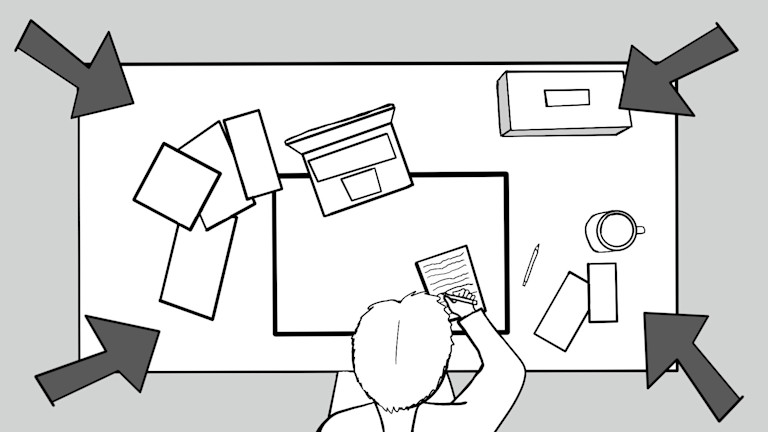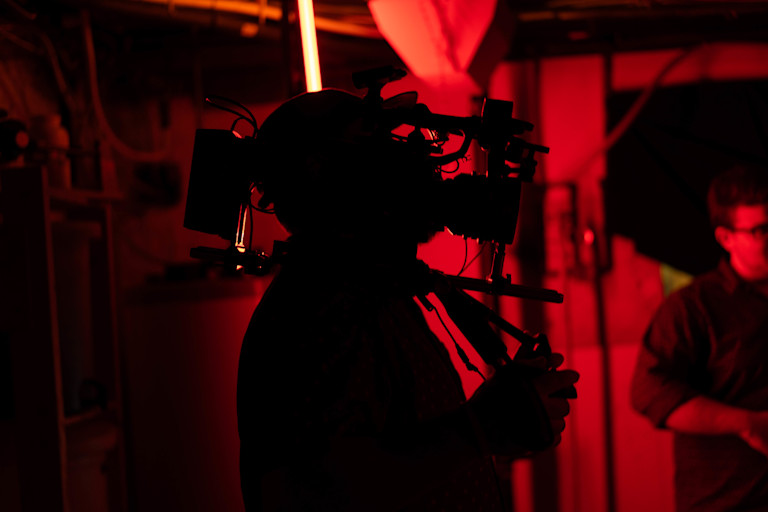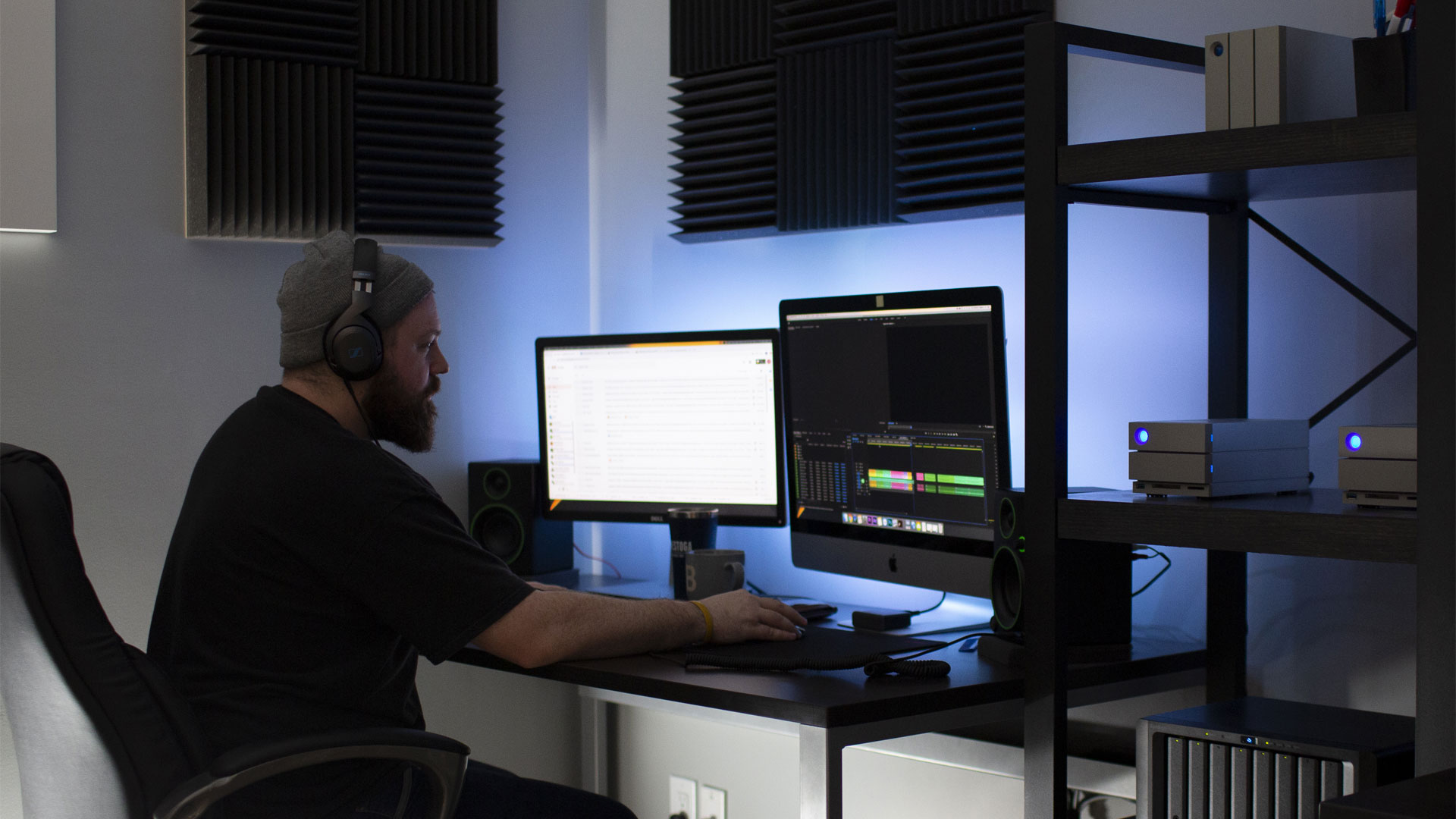Interviewing on Camera: How to Make Your Talent Shine and Your Video Pop
Behind the Scenes
"Reel-y" Insightful Key Points
Want to make an interview video that people will actually want to watch? Check out these tips for making it happen:
Start by developing a rough script before developing your questions. This can be point form and helps to ensure that you're getting the most relevant content into the correct length of video.
Develop questions that prompt the scripted responses but still allow room for the interviewee to expand on those ideas to make the interview feel like a natural conversation.
Location, lighting, sound, and wardrobe all play a big role in how your video comes across. Really consider these elements when planning your shoot.
So you want to make an interview video? Well, you've come to the right place. Video production companies like us do these a lot, and we've picked up on a bunch of tricks, techniques, and ideas on how to ensure:
You're getting the most relevant content into the correct length of video
The interviewee feels comfortable and appears that way on camera
Your video looks and sounds great (technically speaking)
Questions!
Every interview needs questions, so these are very important. We all know the Five W's technique - Who, What, Where, When, Why (and How) when it comes to basic information gathering. But this method doesn't always produce the most engaging content. When producing an interview video, not all of this content can be communicated under certain time constraints (nor does it need to be).
Decide what you want people to say
Although it doesn't seem like the most natural place to start, it can be very helpful to develop your end goal first. Start with a rough script before developing your questions! This can be point form, so don't worry about polishing every word or sentence! Just remember, if the point form notes take about three minutes to read, expect someone that's speaking about it to take 40% longer. People like to talk, especially when they're experts on the matter.
So let’s say I want a thirty-second video about how good ‘John’s Hamburgers’ are. I likely will spend 10 seconds introducing myself and the topic. And then spend the remaining 20 seconds explaining one reason why they are so good!
Decide how to get them to say it
Develop questions that will prompt the scripted responses, but still allow room for the interviewee to expand on those ideas. Sometimes you'll get a response even better than the one you planned. Don't push your interviewee into a corner; gently nudge them in the direction you want them to go with their response. This is also important when it comes to making your talent feel comfortable. Sitting down in front of a camera with bright lights and a microphone in your face can be a daunting task for some. Allow the interview to feel more like a natural conversation for the best results.
Speaking about sounding natural, a question we get all the time is whether or not the talent should memorize their responses. Our answer is always no. It's okay to share your questions with the interviewee before the filming day, but stress to them that they shouldn't worry about memorizing anything. If they're an expert on the content, answers will come naturally. Memorizing or overpreparing answers can make people sound robotic, monotone, or inauthentic. Engagement is key, and more feelings come out when someone is communicating a raw and honest response.
Helpful tip: Two to three questions is generally the most you can fit into a one-minute video. It's easy to break this down into 15-20 seconds per response, and about 5-10 seconds for a call to action and logo animation at the end.
Don't worry
Cameras are great because they can fix hiccups. We can do 10 takes and edit together different responses while making them sound totally natural. So you don’t need to feel pressure. The production company should make you feel comfortable, and they'll help drive the motivated response. They are experts and they do this a lot. Movie magic has got you covered!
But what should the interviewee wear?
We have a more detailed blog on How to dress for an interview video, but here are some of the basics:
Wear warm and solid colours (neutral palettes or some colour depending on your style)
Avoid stripes, glossy colours, and thin plaid patterns (these can appear distorted on camera)
Be comfortable in your clothing. Feeling comfortable always translates better on camera!
Location, Location Location
Okay, so you have a plan for what you want your talent to say AND how you want them to say it. Now you have to start thinking about logistics. Finding a location to film an interview can be tough. There are a bunch of factors to consider including space, lighting, sound, and location relevance. It's best practice to include the production company in this decision, as they'll most likely have thoughts on what will work best for their set-up. It's tempting to block off that board room as your filming space for the day but consider the factors above when making your final decision.
Space: Production equipment can take up a lot of room. We're talking lights, lighting stands, cameras, camera supports (tripods, sliders, etc...) sound equipment, cables, and the list goes on. When you add in the crew behind the scenes and the big boardroom table the room can begin to feel tight really quickly.
Lighting: Does the room have big windows? If so this can cause a problem with the reflections and lighting of your interview. There are always ways to work around this, but it's best to consult with the production company to make a plan.
Sound: Ever heard that loud AC turn on out of nowhere? Or maybe you've heard noisy coworkers on the floor above throwing a party. Normally these are sounds we don't pay much attention to, but microphones are sensitive and can pick up on small sound changes like these, creating distractions and inconsistencies in your final video. Always consider the sound environment, and anticipate potential disruptions before landing on your perfect filming location.
Relevance: The last thing you should consider is whether your location is relevant to the content of your interview. Will your location show well on camera? The general rule of thumb is the more space the better, and the production company you're working with should have plenty of expert opinions on this.
Typically a production company will help you find the perfect location and make sure everything runs smoothly - but if you're looking to do this video in-house we suggest doing a location scout a week or so before your filming date. Stand in the space and ask yourself these questions - Do I hear any background noise that could be distracting? Is this a high-traffic area at any time during the day? How much natural light does this space have? Are there any power outlets I can use to plug in lights, cameras, and audio equipment? Will this space look good on camera? All of these elements need to be considered before you move forward with the location. Plus, it's always a good idea to have a backup plan in case anything goes wrong on the day of the shoot. Remember, it's all about making your interviewee feel comfortable and making sure your audience stays focused on the content of the interview, not that distracting hum coming from the AC unit
Don't Skimp on the Gear
When it comes to equipment, don't be afraid to go all out when your message calls for it. A video production company will have all the bells and whistles to make your interview video look and sound like a Hollywood production. We're talking cameras, lenses, lighting, sound equipment, tripods, dollies, and all the other accessories that go into making that perfect video. Using top-notch equipment is like putting a fancy suit on your message, it's sure to make a lasting impression. So go ahead, don't hold back, your audience will be impressed and so will you!
We hope these suggestions help you with your next interview video! If you have anything to add or have any additional questions, feel free to reach out to us, we're always happy to chat video.
Ready to rumble?
For over 10 years, we’ve helped busy marketing teams create standout content—without the stress. Projects typically range from $15K to $100K+, so it’s worth choosing a partner who knows how to make that investment in your brand count. If you're looking for a creative team who gets it, let’s talk.




